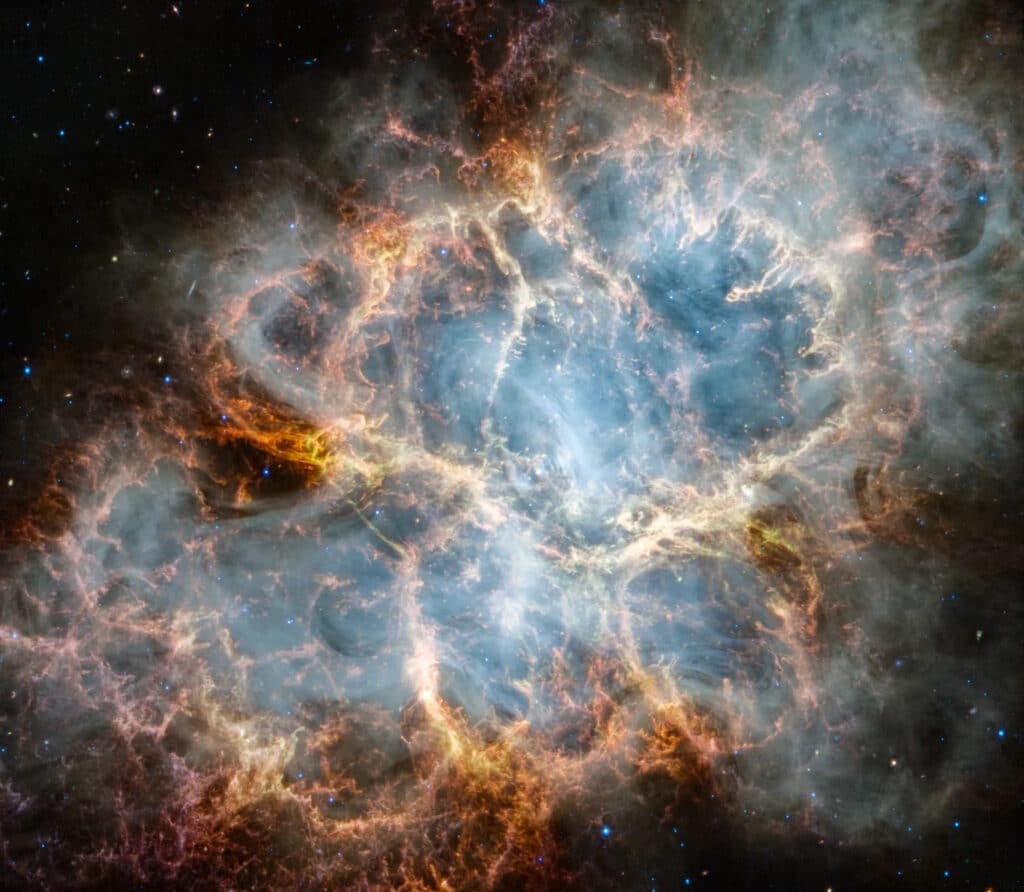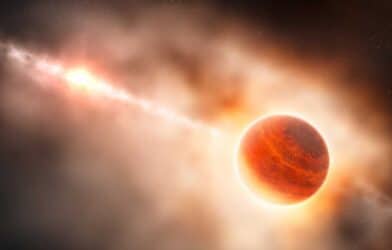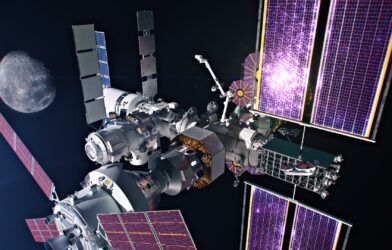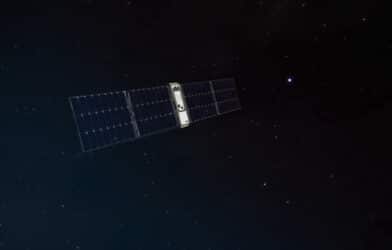NASA’S James Webb Space Telescope is illuminating a supernova remnant located 6,500 light-years away. The Crab Nebula, a stunning celestial spectacle, has fascinated astronomers since it was first recorded in 1054 CE. Now, scientists are using the powerful capabilities of the Webb telescope to study the Crab Nebula in unprecedented detail, aiming to unlock the secrets of its origins and inner workings.
Princeton University researchers are leveraging Webb’s Near-Infrared Camera (NIRCam) and Mid-Infrared Instrument (MIRI) to delve deeper into the Crab Nebula’s composition and characteristics. They hope to gain insights into the type of explosion that created this supernova remnant.
“Webb’s sensitivity and spatial resolution allow us to accurately determine the composition of the ejected material, particularly the content of iron and nickel, which may reveal what type of explosion produced the Crab Nebula,” says study author Tea Temim, of Princeton University, in a media release.
In Webb’s infrared observation, the Crab Nebula exhibits a cage-like structure composed of gaseous filaments, shown in red-orange, similar in shape to an optical image captured by NASA’s Hubble Space Telescope in 2005. However, Webb’s infrared view brings forth new details, particularly in the central regions, where it maps the emission from dust grains, appearing in yellow-white and green.
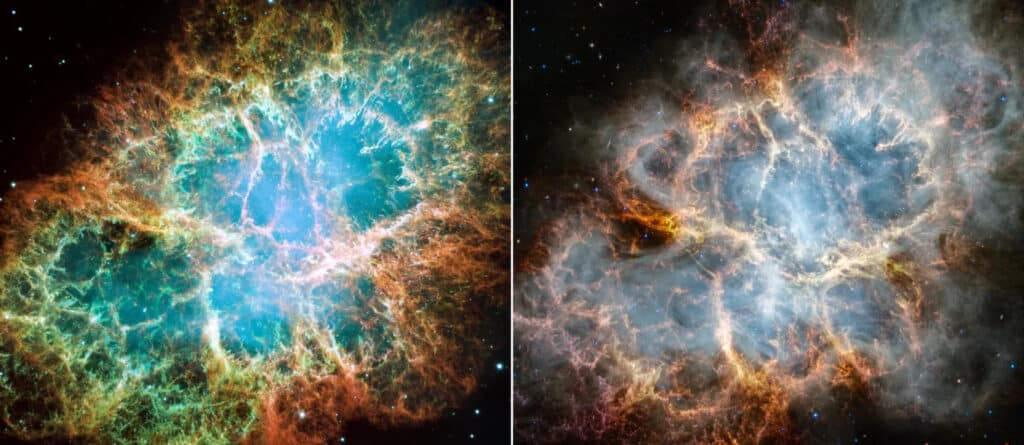
One striking feature observed in the Crab Nebula’s inner regions is synchrotron radiation, depicted as milky smoke-like material that pervades much of its interior. This radiation results from charged particles, such as electrons, moving at incredibly high speeds along magnetic field lines. Webb’s NIRCam instrument provides an unprecedented level of detail in capturing this synchrotron radiation.
The source of this synchrotron radiation lies at the heart of the Crab Nebula — a rapidly rotating neutron star known as a pulsar. The pulsar’s powerful magnetic field propels particles to extreme velocities, causing them to emit radiation as they spiral around magnetic field lines.
To locate the pulsar within the Crab Nebula, observers can trace the curvy wisps that follow a circular pattern in the middle of the nebula, leading to a bright white dot at the center. These wisps represent the structure of the pulsar’s magnetic field, shaping the surrounding nebula.
Notably, the nebula exhibits a peculiar feature where the white material curves sharply inward from the edges of the filamentary dust cage, converging towards the pulsar’s location. This narrowing may result from the compression of the expanding supernova wind by a belt of dense gas.
The pulsar continues to propel the gas and dust shell outward at a rapid pace. Within the remnant’s interior, yellow-white and green mottled filaments form large-scale loop-like structures, indicating the presence of dust grains.
Astronomers will further analyze the Webb data and consult previous observations from other telescopes in their quest to unravel the mysteries of the Crab Nebula’s past. Additionally, new Hubble data, expected within the next year, will provide fresh insights into the supernova remnant, enabling astronomers to make more accurate comparisons between Webb and Hubble’s findings.
